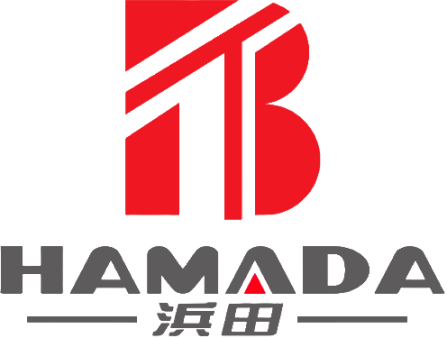What is the Reduction Ratio of Harmonic Drive?
What is the Reduction Ratio of Harmonic Drive
In recent years, harmonic drive technology has gained significant attention in various industries due to its unique advantages in precision motion control. One of the key factors that set harmonic drives apart is their high reduction ratio. In this article, we will explore the concept of reduction ratio in harmonic drives and its importance in modern applications.
Body:
1. Understanding Harmonic Drive Technology
Harmonic drive, also known as strain wave gear, is a gear system that uses a flexible spline, a circular spline, and a wave generator to transmit motion and torque. This innovative design allows for compact size, high precision, and low backlash.
2. What is Reduction Ratio?
The reduction ratio of a gear system refers to the ratio of the input speed to the output speed. In simpler terms, it indicates how many times the input rotation is reduced at the output. A higher reduction ratio means the gear system can achieve slower output speeds and higher torque.
3. Reduction Ratio of Harmonic Drive
Harmonic drives are renowned for their high reduction ratios, typically ranging from 50:1 to 320:1. This wide range of reduction ratios makes harmonic drives suitable for a variety of applications, from robotics and aerospace to precision machinery and medical devices.
4. Advantages of High Reduction Ratio in Harmonic Drive
Enhanced Torque Transmission: A high reduction ratio allows harmonic drives to transmit higher torque, making them ideal for applications that require significant force.
Precise Positioning: With a high reduction ratio, harmonic drives can achieve accurate positioning and repeatability, which is crucial in industries like semiconductor manufacturing and robotics.
Compact Design: Despite the high reduction ratio, harmonic drives maintain a compact size, saving valuable space in equipment design.
5. Applications of Harmonic Drive with High Reduction Ratio
Industrial Robots: High reduction ratio harmonic drives are widely used in robot joints, providing precise motion control and high torque.
Aerospace: Harmonic drives with high reduction ratios are used in satellite solar panel deployment systems and other space applications.
Medical Devices: In surgical robots and prosthetic devices, harmonic drives with high reduction ratios ensure accurate and smooth movements.
In conclusion, the reduction ratio of harmonic drives is a key factor that contributes to their exceptional performance in various industries. With reduction ratios ranging from 50:1 to 320:1, harmonic drives offer a versatile solution for applications requiring high precision, compact size, and powerful torque transmission. As technology continues to advance, the demand for harmonic drives with high reduction ratios is expected to grow, further expanding their applications in the future.
 English
English Español
Español Português
Português русский
русский français
français 日本語
日本語 Deutsch
Deutsch Tiếng Việt
Tiếng Việt Italiano
Italiano Nederlands
Nederlands ไทย
ไทย Polski
Polski 한국어
한국어 Svenska
Svenska magyar
magyar Malay
Malay বাংলা
বাংলা Dansk
Dansk Suomi
Suomi हिन्दी
हिन्दी Pilipino
Pilipino Türk
Türk Gaeilge
Gaeilge عربى
عربى Indonesia
Indonesia norsk
norsk اردو
اردو čeština
čeština Ελληνικά
Ελληνικά Українська
Українська Javanese
Javanese فارسی
فارسی தமிழ்
தமிழ் తెలుగు
తెలుగు नेपाली
नेपाली Burmese
Burmese български
български ລາວ
ລາວ Latine
Latine Қазақ
Қазақ Euskal
Euskal Azərbaycan
Azərbaycan slovenský
slovenský Македонски
Македонски Lietuvos
Lietuvos Eesti Keel
Eesti Keel Română
Română Slovenski
Slovenski मराठी
मराठी Српски
Српски
Wide Application of Gearbox Planetary Reducer in Industry
With the increasing demand for industrial equipment to develop towards high efficiency, precision and high load operation, Gearbox Planetary Reducer, as an important transmission device, has been widely used in many industries. This reducer has become an indispensable core component in the modern industrial field with its compact structure, strong load capacity and high transmission efficiency.
Read MoreWhat is the Difference Between Linear and Rotational Actuators?
Actuators are essential components in various mechanical systems, converting energy into motion to perform tasks in industries ranging from robotics to manufacturing. Among the many types of actuators, linear actuators and rotational actuators are the two most commonly used. While both are designed to create movement, they do so in different ways and serve different purposes. Understanding the differences between these two types of actuators is crucial for choosing the right one for specific applications.
Read MoreWhat is the Purpose of a Rotary Actuator?
In the world of modern engineering, automation, and robotics, precision and reliability are critical components for the success of any system. One such piece of technology that plays a vital role in these areas is the rotary actuator. As industries continue to demand more sophisticated machinery capable of performing complex movements, the rotary actuator is becoming increasingly indispensable. But what exactly is the purpose of a rotary actuator, and how does it function in various applications?
Read More